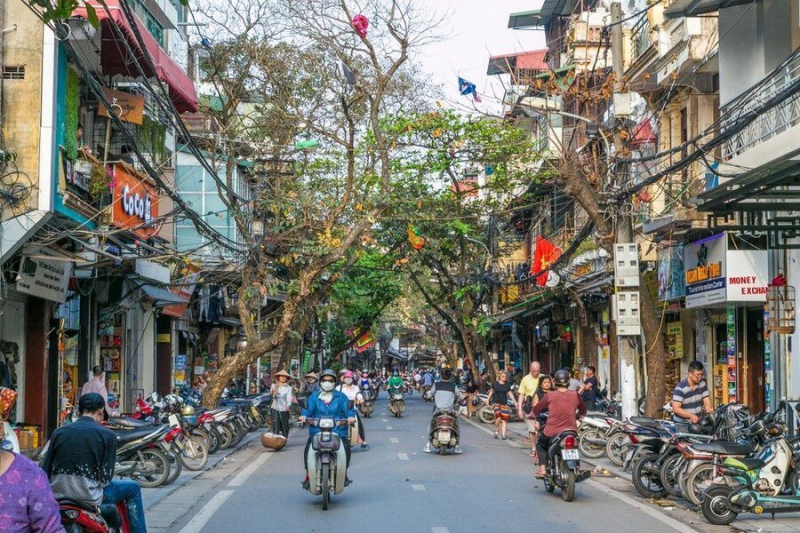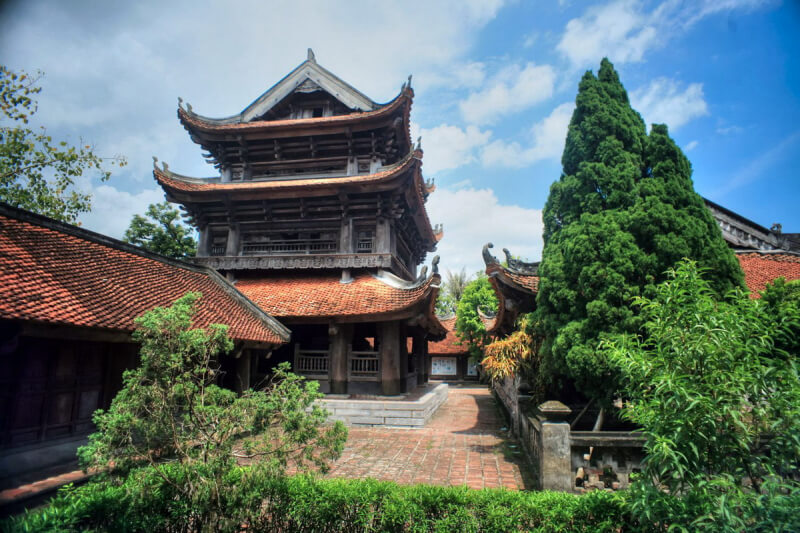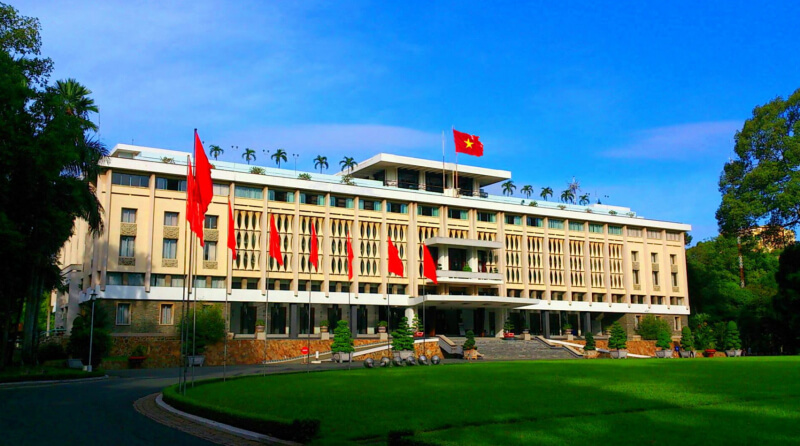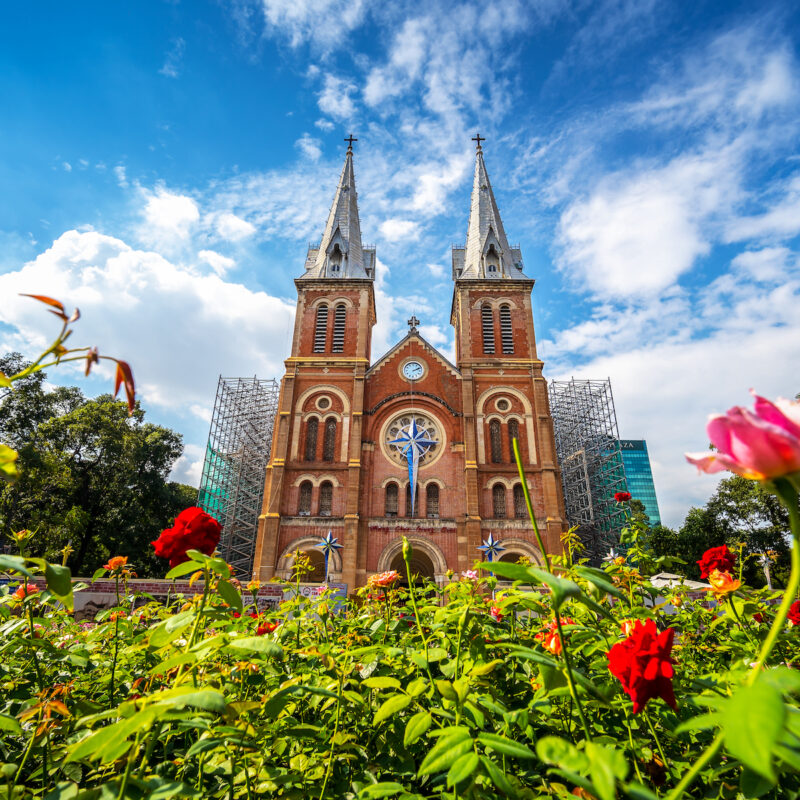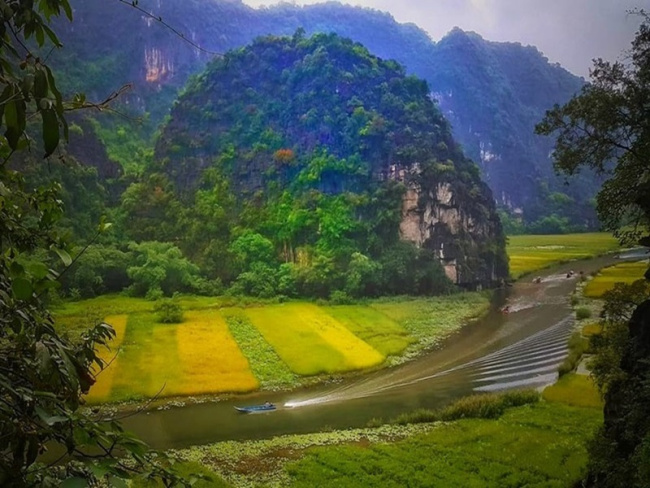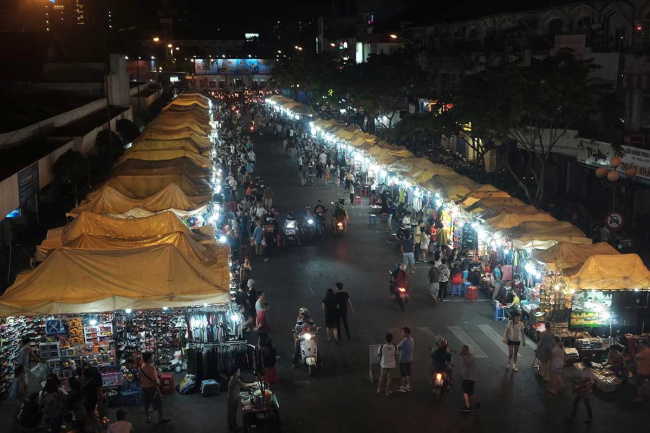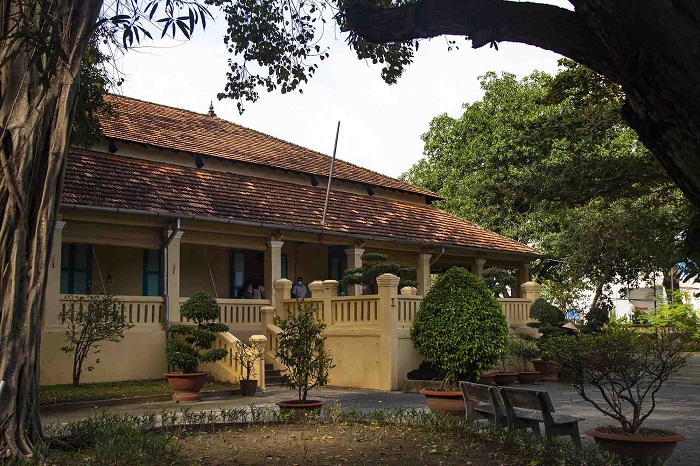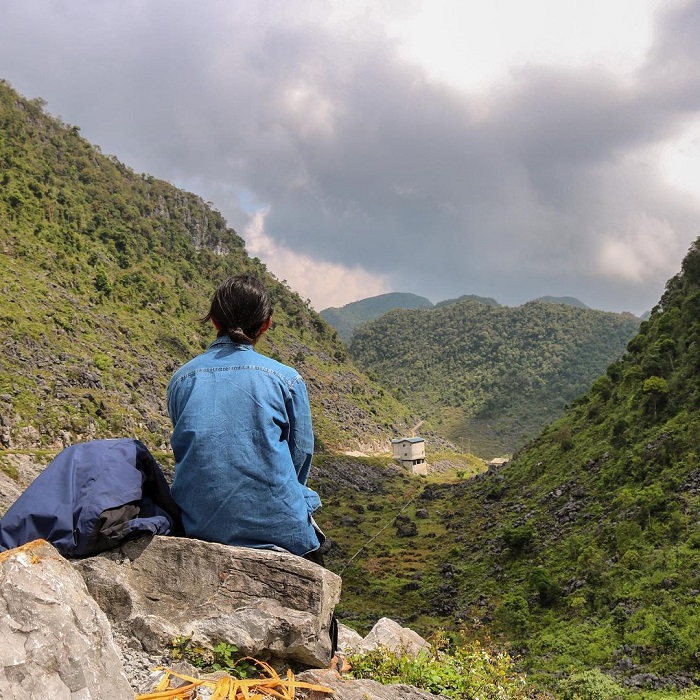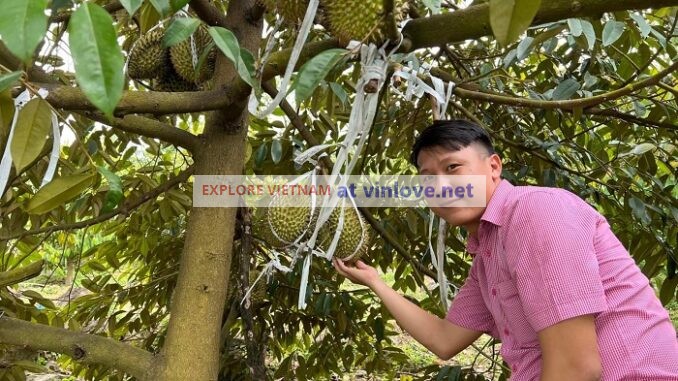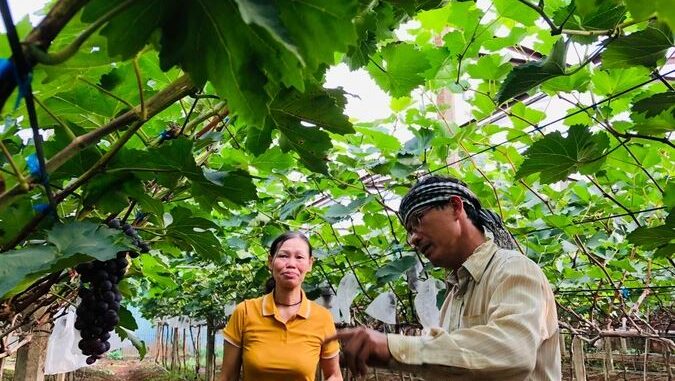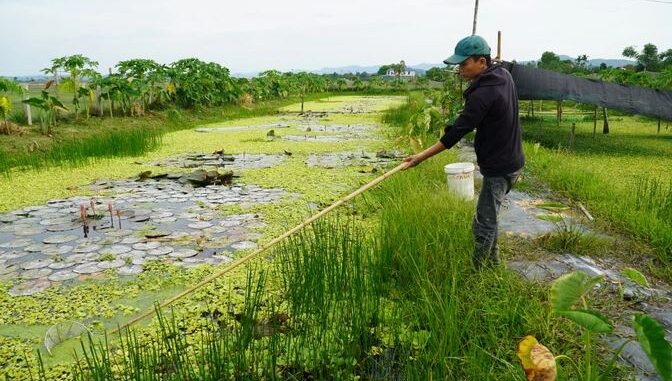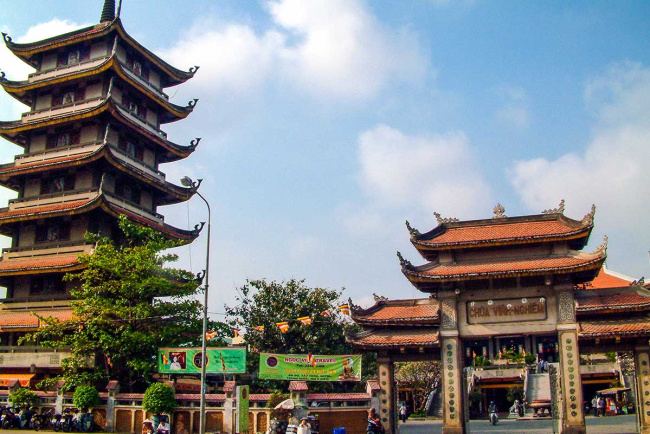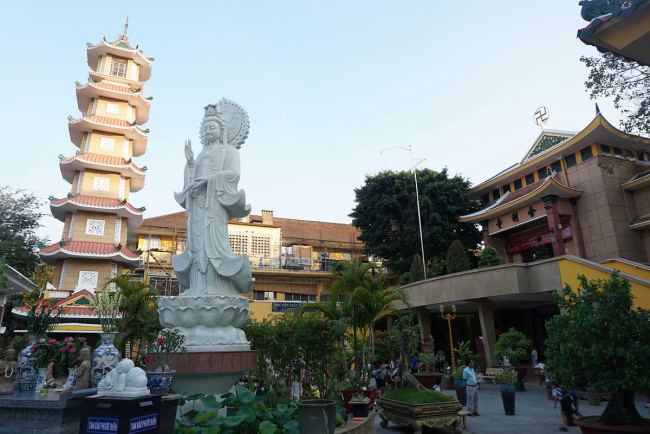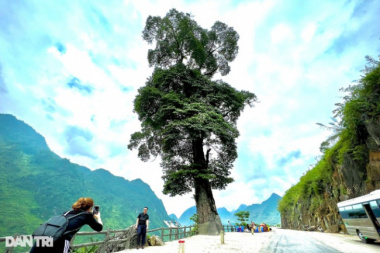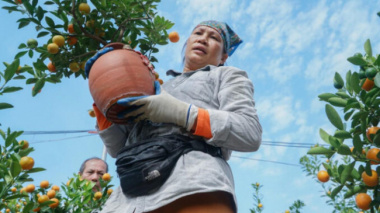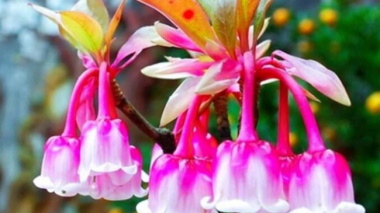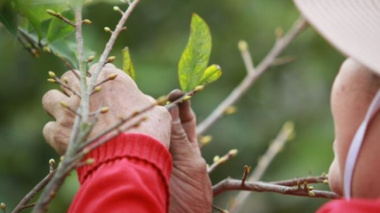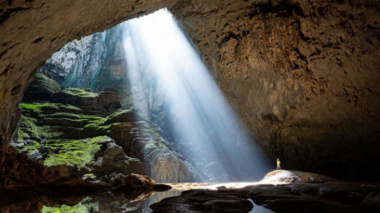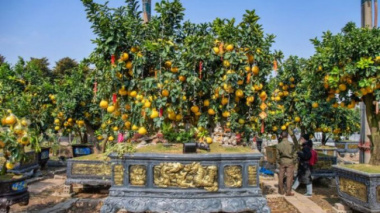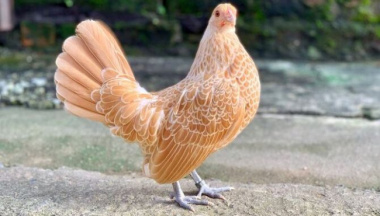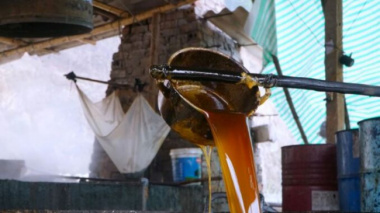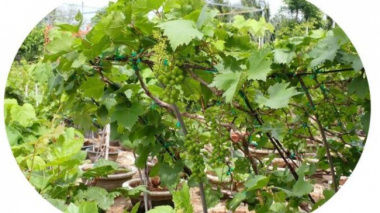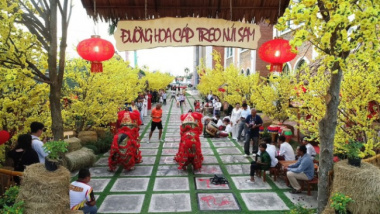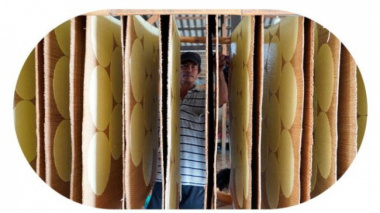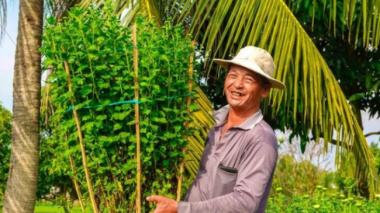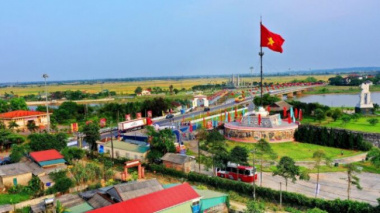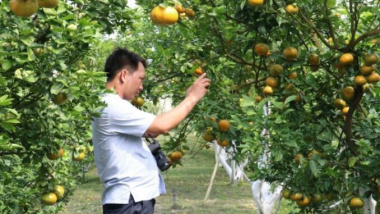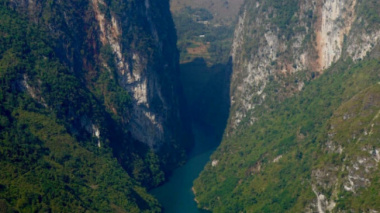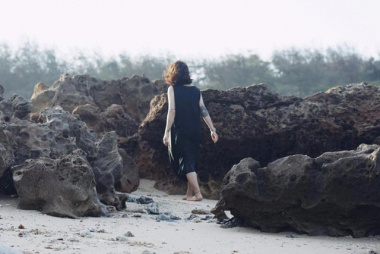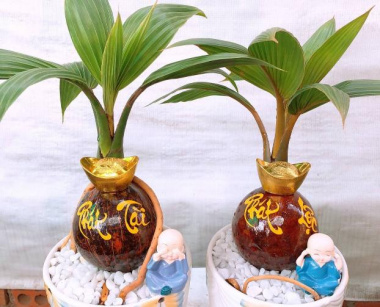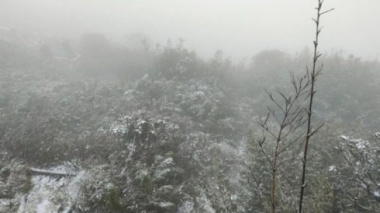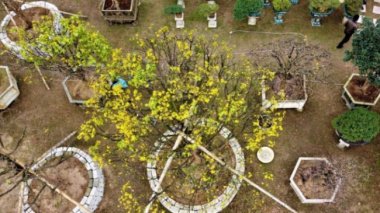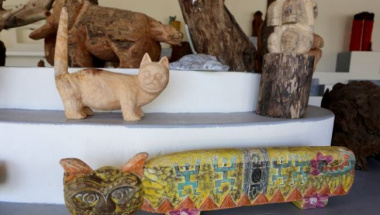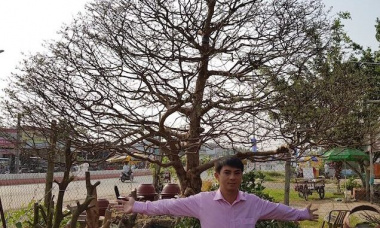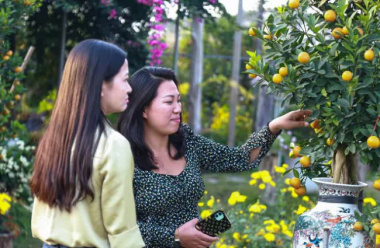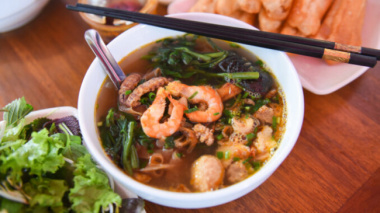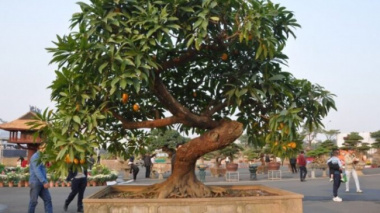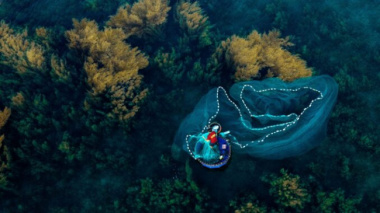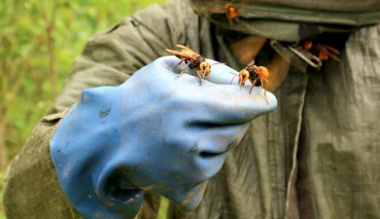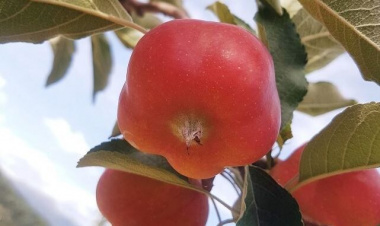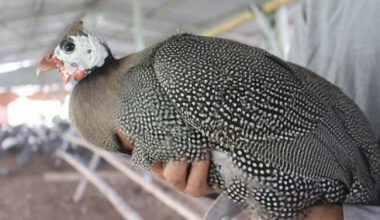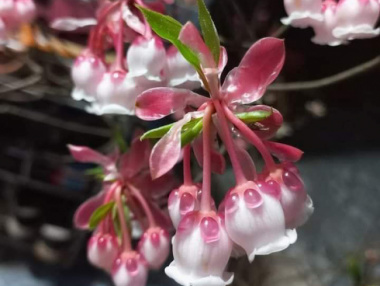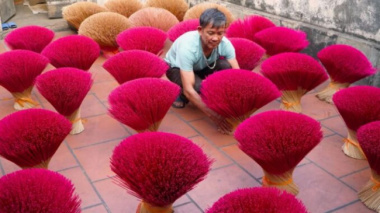The Birds of Vietnam
- Endemic Bird Species in Vietnam
- Tonkin Partridge
- Edwards’s Pheasant
- Black-crowned Fulvetta
- White-throated Wren-Babbler
- Orange-breasted Laughingthrush
- Golden-winged Laughingthrush
- Collared Laughingthrush
- Grey-crowned Crocias
- Vietnamese Greenfinch
- Chestnut-eared Laughingthrush
- Near Endemic Bird Species in Vietnam
- White-eared Night-Heron
- Germain’s Peacock-Pheasant
- Red-vented Barbet
- Indochinese Barbet (Annam Barbet)
- Red-collared Woodpecker
- White-winged Magpie
- Black-headed Parrotbill
- Black-hooded Laughingthrush
- Hornbills in Vietnam
- Great Hornbill
- Austen’s Brown Hornbill
- Wreathed Hornbill
- Rare Birds to Spot in Vietnam
- Spoon-billed Sandpiper
- Black-tailed Gull
- Caspian Tern
- Whiskered Tern
- Far-eastern Curlew
- Painted Stork
For birders, there is nothing more satisfying than viewing the rarest species, and while staying in Vietnam, you’ll have a plethora to observe. A land of incredible biodiversity, Vietnam supports about 1,200 species of birds throughout the year. Sadly, poaching and illegal trade have resulted in many populations becoming endangered.
With so many different types, it would be impossible to list them all, so instead, in no particular order, we will present some of the most interesting and unique endemic and near-endemic avians in Vietnam.
Endemic Bird Species in Vietnam
Birds are blessed with a special gift of mobility, so when a patch of habitat no longer provides them with the sustenance they require, they can simply spread their wings and search for something better. Even with the superpower of flight, birds are often endemic, meaning they are confined to a small region because of their diet or habitat requirements.
Vietnam’s jungles, coastline, and wetlands are exploding with nutrients and food sources, thus, many bird species have evolved to rely on the unique bounties that these lands provide.
Tonkin Partridge
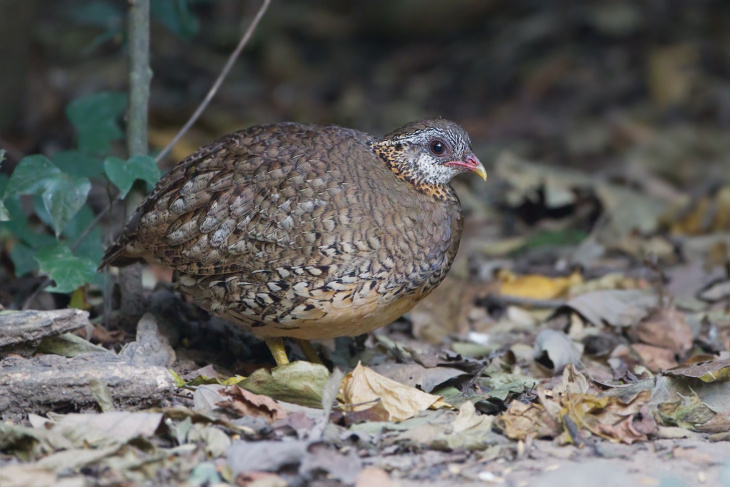
Arborophila chloropus, Thailand. Photo:
The Tonkin Patridge (Arborophila chloropusis) is a small chicken-like bird, confined to very specific parts of Northwestern Vietnam. The populations are supported via the thick evergreen forest and second-growth logging forests. Despite having a limited habitat range, Tonkin Patridge’s population numbers are fairly stable, making them a good target for birdwatchers.
Edwards’s Pheasant
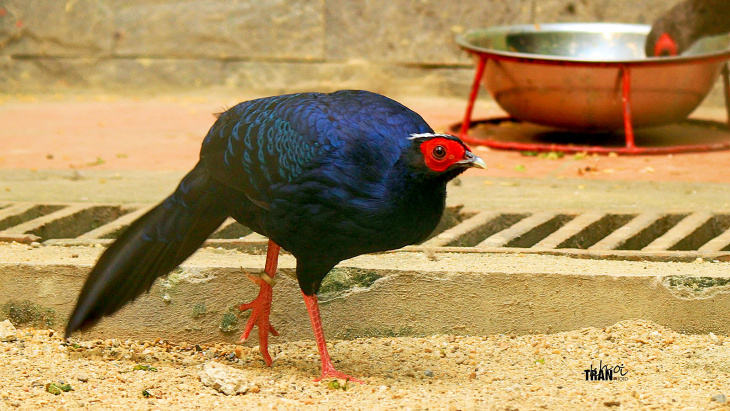
Edwards’s Pheasant in Viet Nam. Photo:
Unlike the Tonkin Partridge, which benefits from the small yet stable population, the Edwards’s Pheasant is on the cusp of extinction in its central Vietnamese habitats. In the last few years, conservation groups have rallied to protect the species, as there are approximately 200 remaining in the wild. Due to this, birders will have a slim to none chance of seeing one.
Black-crowned Fulvetta

Black-crowned Fulvetta. Photo: Brian Ralphs
The tiny Black-crowned Fulvetta can be a challenging bird to spot due to its small stature and bland coloring that easily camouflages into the thickness of the forests. Additionally, while its population numbers are stable, the Black-crowned Fulvetta is found in just a handful of habitats across central Vietnam. Fortunately, these songbird’s melodies can be easily heard smoothly descending in octave.
White-throated Wren-Babbler
Confined to a tiny range in the subtropical montane forests of north-central Vietnam, the White-throated Wren-Babbler is an incredible bird facing steep challenges. Listed as endangered by the International Union for Conservation of Nature (ICUN), this little bird is under pressure from rapid habitat loss.
Its brown plumage, small and round physique, and dark curved bill are all unique characteristics adapted to succeed in moist mountain forest land. Soft, slow, and single tone calls are common for this species, with separate calls used for different situations.
Orange-breasted Laughingthrush

Orange-breasted Laughingthrush. Photo:
A descendent of the Spot-breasted Laughingthrush, the Orange-breasted Laughingthrush is unique to its region and thus, unmistakable.
Known for its melodic calls and semi-mimicry, this species is endemic to the Langbian Plateau in south Vietnam, relying on foothill forest and densely vegetated shrubland for food. Its dark plumage is broken up by a bright orange spotted chest and orange highlights over the eyes.
Golden-winged Laughingthrush
While the Orange-breasted Laughingthrush thrives in sub-montane forests, the Golden-winged Laughingthrush survives exclusively in the alpine forests of the Annamite Mountains in central Vietnam. It has a smooth whistle-like call often broken into two distinct parts. Its dark grey and black plumage are contrasted by almost fluorescent-like orange-tipped wings and crown.
Like most Laughingthrush species, foraging on the ground is common, and sometimes cross-species collaborative foraging is witnessed. For whatever reason, the Golden-winged Laughingthrush is very resilient to habitat degradation and is an opportunistic nester and hunter.
Collared Laughingthrush

Collared Laughingthrush. Photo: Brian Ralphs
Opposite coloring as the other Laughingthrush species, the Collared Laughingthrush is predominantly orange, yellow-ish, and silver with some gray undertones and a black crown and face. This species also relies heavily on mid-to-high altitude forests with shrubs underneath the canopy.
Similar to other Laughingthrush species, these birds work in groups or pairs when hunting, making it common to witness multiple bouncing about the undergrowth. The Collared Laughingthrush’a call sounds somewhat like a soft scream in the distance, so don’t be alarmed if you hear it.
Unfortunately for the Collared Laughingthrush, habitat degradation is a major cause for its listing as endangered by the IUCN.
Grey-crowned Crocias
Similar in size and stature to the Laughingthrush species, the Grey-crowned Crocias is a more active hunter. It hops between branches in the canopy searching for prey and often snagging bugs from mid-air. Its range and habitat in Vietnam are limited to medium-altitude forests that receive relatively heavy rainfall throughout the year.
The Grey-crowned Crocias call is also much more abrasive, being close to a series of sharp beeps. Unfortunately, Vietnam is experiencing increasing shortages of high-altitude evergreen forests because of illegal logging, landing this species on the IUCN’s endangered ist.
Vietnamese Greenfinch

Vietnamese Greenfinch. Photo:
Strikingly beautiful with its yellow and black patchiness, pearl-colored beak, and splitting tail feathers, this bird is seeing a population increase in Vietnam’s biodiversity hot spots. Deforestation and habitat degradation has caused some regions of Vietnam to have an increased density of pine and scrub forests, the prime habitat for the Vietnamese Greenfinch.
While far more complex calls can make this species a bit more difficult to identify purely based on its songs, it’s common to see small flocks fluttering about the pine forests in search of prey.
Chestnut-eared Laughingthrush
The oddity of the Laughingthrush species included on this list, the Chestnut-eared Laughingthrush has unique coloration, physical characteristics, and sounds. Its brown-ish coloring is peppered with white and cream color patches. A small orange patch below its eyes and a distinct black stripe across the wings are bright and easily observable.
The Chestnut-eared Laughingthrush is a much more independent bird, often observed foraging alone or with a single companion. Its population is stable, however, its habitat is incredibly specific which has led for it to be listed as vulnerable.
Near Endemic Bird Species in Vietnam
Due to nations like Cambodia, Laos, Thailand, and southern China having habitats and topography similar to that of Vietnam, some species thrive by splitting their time between each country. Migrating between the nations, these birds can be witnessed both within and outside of Vietnam’s borders.
White-eared Night-Heron
Although not very attractive, the White-eared Night-Heron is known for its dark rusty brown plumage, distinct black feathers running up its chest, and throat filled with a soft column of white. Its face has watered-down yellow highlights around its beak, framing its large eyes.
Found only in specific regions of southern China and northern Vietnam, this rare species is undergoing population contractions due to habitat loss. Like many herons, they hunt in well-protected streams near their nesting sites.
Germain’s Peacock-Pheasant

Germain’s Peacock-Pheasant. Photo:
One of the few bird species in which there is a known observational area, the Germain’s Peacock-Pheasant is a year-round resident at the Cat Tien National Park in southern Vietnam. Shy and very sensitive to human presence, a close-up encounter is almost entirely out of the question.
The Germain’s Peacock-Pheasant’s range also seeps into eastern Cambodia, surviving on tropical forests and marshlands. The striking shape and coloration of the birds make them a sight for sore eyes. Intense blue dots pepper both its back and wings, with red skin around its eyes and huge spotted tail feathers giving it a traditional peacock feel.
Habitat loss and illegal capture have driven this bird to join the many others in Vietnam on the IUCN’s “near-threatened” list.
Red-vented Barbet
Barbets are often known for the explosive coloring on their heads that’s noticeable from far distances. However, the Red-vented Barbet has a dark-colored head with just a small glint of orange-red feathers at the base of the beak. Lucky for this bird, it is opportunistic and easily adaptable, meaning it has a presence in just about every region of Vietnam.
One of the most striking characteristics of the Red-vented Barbet is its submarine-like call. Similar to most birds in Vietnam, its population is declining, however, because it can find sustenance in different ecoregions of Vietnam, it is still considered of Least Concern by the IUCN.
Indochinese Barbet (Annam Barbet)

Indochinese Barbet (Annam Barbet). Photo: Brian Ralphs
Bright blue cheek plates with a yellow crown and red base around the beak, surrounded by heavy tropical green wings and body make the Indochinese Barbet stand out, even from a distance. Its population is peppered through south-central Vietnam, southern Laos, and southeastern Cambodia.
The Indochinese Barbet’s song hearkens to what Hollywood often portrays jungle birds to sound like, with a hollow almost wood-like resonance. Because its population remains stable in its niche habitats it has still considered a species of Least Concern by the IUCN.
Red-collared Woodpecker
Woodpecker species around the world are dependent on one important thing: tree density. These birds live in both montane and lowland areas, but due to deforestation, their population is on the decline, placing them on the near-threatened list by the ICUN. Woodpeckers in the southeast Asian ecoregion often have green and red coloration with some kind of striping or streaking.
The Red-collared Woodpecker follows these guidelines, but in general, has much less defined striping on its body, and its red-crown and collaring is a little less prominent than in other species. Woodpeckers are often exciting birds to observe as they grind into tree stands with their beaks. These birds can be found through lowland forests in north-central Vietnam and central Laos.
White-winged Magpie
If you live just about anywhere in the world, you know that Magpies cause quite the ruckus. The regular blue magpies are known for being aggressive during breeding and fledgling season as well as being extremely opportunistic foragers. However, the White-winged Magpies of southeast Asia are a bit different.
Yellow underbellies with patches of white up their chest and wings, long black tails with white tips, and soft charcoal heads cause White-winged magpies to stand out. Their calls are similar to Blue Magpies and other urban crow-like species, with a distinct squawking. They are present in a variety of regions within Vietnam, southern China, and eastern Laos.
Deforestation in Southeast Asia has caused widespread impacts on the majority of avian biodiversity that relies on tree cover. For the White-winged Magpies, this deforestation has accelerated population declines and placed them on the IUCN’s near-threatened list.
Black-headed Parrotbill
These tiny little birds look like a character straight out of old-school ACME cartoons. Their bold black crowns are contrasted by gray cheeks, pale orange beaks, white underbellies, and soft brown wings and tails. They are social birds and are often observed moving in large flocks throughout various forest landscapes.
The Black-headed Parrotbill‘s habitat is highly limited, with numbers in the southern Annam region of Vietnam and a small population in southeastern Cambodia. Due to increasing forest loss, their populations continue to decline, so if you’re interested in observing one in the wild, the time is now as the IUCN has recently uplisted it to vulnerable.
Black-hooded Laughingthrush
Keeping in good company with other Laughingthrush species of the region, the Black-hooded Laughingthrush has distinct colors making it unmistakable in its habitat range. Its charcoal wings and back fade into a strong white wrap above the shoulder blade, with a dark black hood around the head.
Found in isolated pockets of southern and central Vietnam and southern Laos, the Black-hooded Laughingthrush has distinct white ovals around the back of its eyes. Despite its niche habitats, its population remains relatively stable and is a good target bird for birdwatchers.
Hornbills in Vietnam
This list would not be complete without adding some of southeast Asia’s most incredible birds: Hornbills. Many of these species are still relatively unknown to researchers, and despite their striking beauty, there’s much we don’t know about their status and behavior in the forests of Vietnam. Here’s just a few of them that you can see while in the country.
Great Hornbill

Great Hornbill. Photo: Mike Prince
A beautiful species that have yet to experience extinction-level poaching, the illegal trade of Great Hornbills (and other Hornbill species) is increasing. In combination with deforestation, the Great Hornbills are facing a difficult path forward as they heavily rely on undisturbed forested regions.
Great Honrbill’s could easily be mistaken for fruit hanging from a tree or an animal created for a children’s book with its bold yellow crown and distinct downward curved yellow beak.
Austen’s Brown Hornbill

Austen’s Brown Hornbill. Photo: lonelyshrimp
Confined to a much smaller region of Vietnam than the Great Hornbill, Austen’s Brown Hornbill is relatively unstudied, meaning we don’t know much about it. Its population is surely in decline due to hunting and forest loss, though.
Its appearance is a bit more subdued compared to the grandiose colors of the Great Hornbill, nevertheless, it’s hard to miss with its horned beak and raised blue skin around its eyes.
Wreathed Hornbill
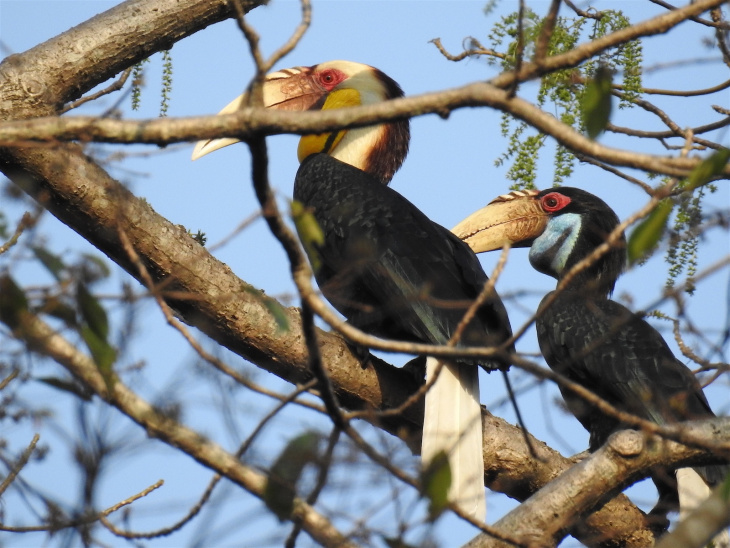
Wreathed Hornbill in Pakke Tiger Reserve. Photo:
These birds make their homes in the southern Vietnam forests surrounding the Mekong River Delta and beyond into Thailand, Malaysia, and Indonesia. Their yellow gullets and wood-grain-like beaks stand out against their dark red eyes and cream-colored throats.
The calls from Wreathed Hornbills sound like something from a Jurassic Park film, resonating deep within their nasal cavity with a full, sharp sound. While no Hornbills are endemic to Vietnam, the nation has habitats that are prime for their survival and thus, they are realistically observable depending on when and where you are in Vietnam.
Rare Birds to Spot in Vietnam
For most birdwatchers, migratory birds personify the mystique of the avian world. Flying thousands of miles each fall and spring ensures healthy generations of birds to come. For Vietnam, there are many birds that stop over along the coastline, including some of the rarest, and thus, most exciting to see.
Spoon-billed Sandpiper
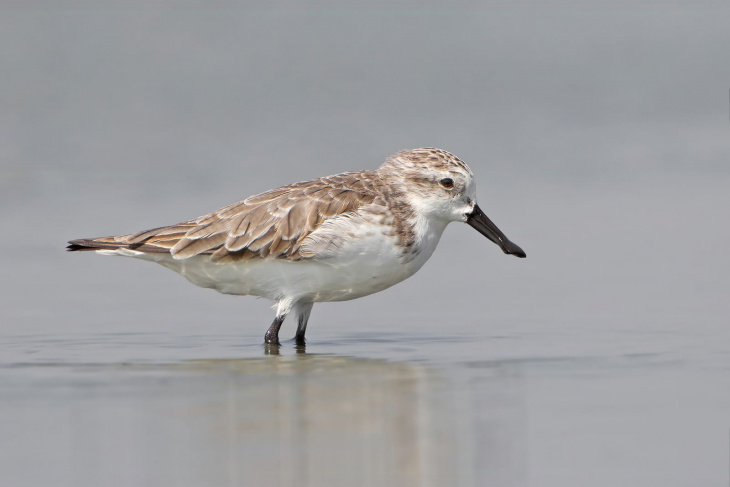
Spoon-billed Sandpiper, Thailand. Photo:
Spoon-billed Sandpipers are one of the planet’s most imminently threatened shorebird species. With under 200 breeding individuals left in the wild and annual observations of population declines, there is limited time left to see these birds along the coastlines of Vietnam unless more is done to conserve them.
Their plumage is typical of many shorebirds with a white underbelly and brownish-grey wings and back. But what makes Spoon-billed Sandpipers special is their spoon-shaped bills adapted perfectly for digging in the sand. The birds that choose southeastern Vietnam’s coast as their migration refuel point often stay for winter, giving observers a window from late October until early March to try to get a glimpse of them.
In May of 2020, a team of researchers in China and Vietnam put together a task force to try to accelerate conservation efforts for Spoon-billed Sandpipers in the region.
Black-tailed Gull
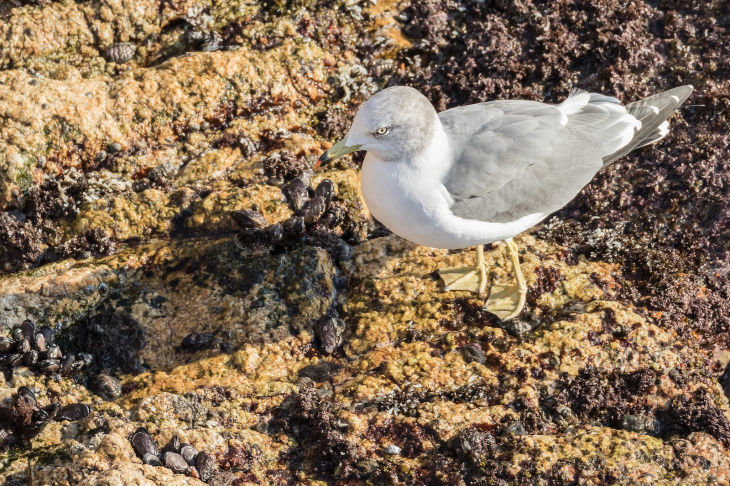
Black-tailed Gull in South Korea. Photo: Jon Cox
The Red River Delta in northern Vietnam is a haven for migratory birds, with many Black-tailed Gulls using this region as a stopover point. The birds have a distinct black tail that stands out from their otherwise pale coloring. The reason this bird is rare to observe in Vietnam isn’t due to its population, as there are about 2 million black-tailed gullies in the wild, rather it only stops for a short time is in severe condition.
As a matter of fact, Black-tailed Gulls have a healthy global population number around 2 million birds. That said, they make a brief stop in the Red-River Delta and so for those interested in having a glimpse at a beautiful seabird refueling in Vietnam, the window is small.
Caspian Tern
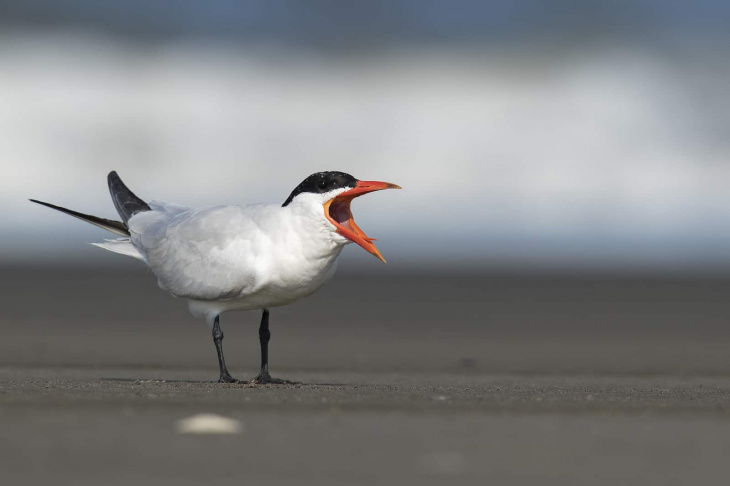
Caspian Tern. Photo: Mick Thompson
While Caspian Terns have no imminent threat of becoming extinct because of their widespread distribution over the globe, they only spend a short time in Vietnam’s Mekong River, making them a seasonal joy to observe. Their slender orange beaks give way to relatively large wings and small tube-like body giving them extremely efficient aerodynamics.
They are often given the personification of being grumpy because of their facial markings that look like eyebrows in a downward slant.
Whiskered Tern
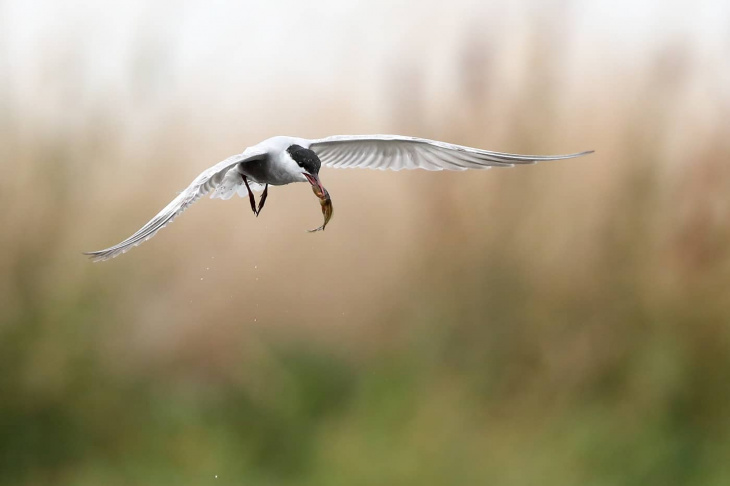
Whiskered Tern. Photo: patrickkavanagh
A little less striking than the Caspian, these birds look like elderly souls with their gray-scale plumage. During fall and spring migrations, their distribution is widespread along Vietnam’s coast. Again, the Whiskered Tern is not under threat of global or local extinction, however, it only makes brief appearances in Vietnam, making for an exciting search for birdwatchers.
Far-eastern Curlew

Far-eastern Curlew. Photo: ken
Threatened by decreasing coastal habitats and declining population, the Far-eastern Curlew is the largest migratory shorebird in the world. It has an incredibly long and tough bill that it uses to dig deep into the coastal sediment for prey.
Its stopover points in Vietnam are usually just to the north of the Mekong Delta, where it forages in large coastal mudflats. If shorebirds are your thing, this may just be one of the most amazing species to see in all of Vietnam.
Painted Stork
One of the more bizarre wetlands birds in all of southeast Asia, seeing a Painted Stork is like stepping into a sci-fi story. This long-legged wading bird has a big beak designed for digging deep into freshwater sediments. It’s not a year-round resident of Vietnam and only makes use of the Mekong and Red River deltas during migrations.
Unfortunately, the birds striking appearance has made it a target for illegal wildlife trade. Furthermore, worldwide habitat degradation has caused a decline in this species.
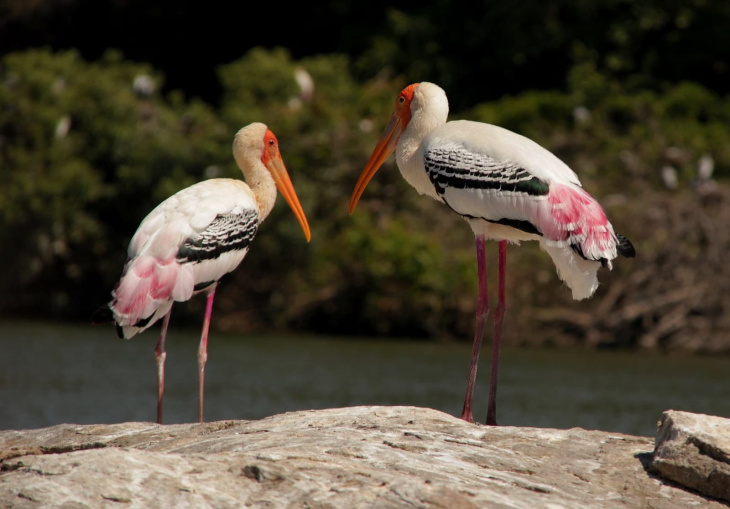
Painted Storks. Photo: Saroj Kumar Mishra
While this list might seem a bit long, our hope is that you’ll be able to enjoy spotting a few of Vietnam’s beautiful avian species. Remember to always observe wildlife responsibly, keep your distance, and enjoy witnessing the native and migratory birds that call this country home.
Đăng bởi: Trịnh Bửu Lâm


